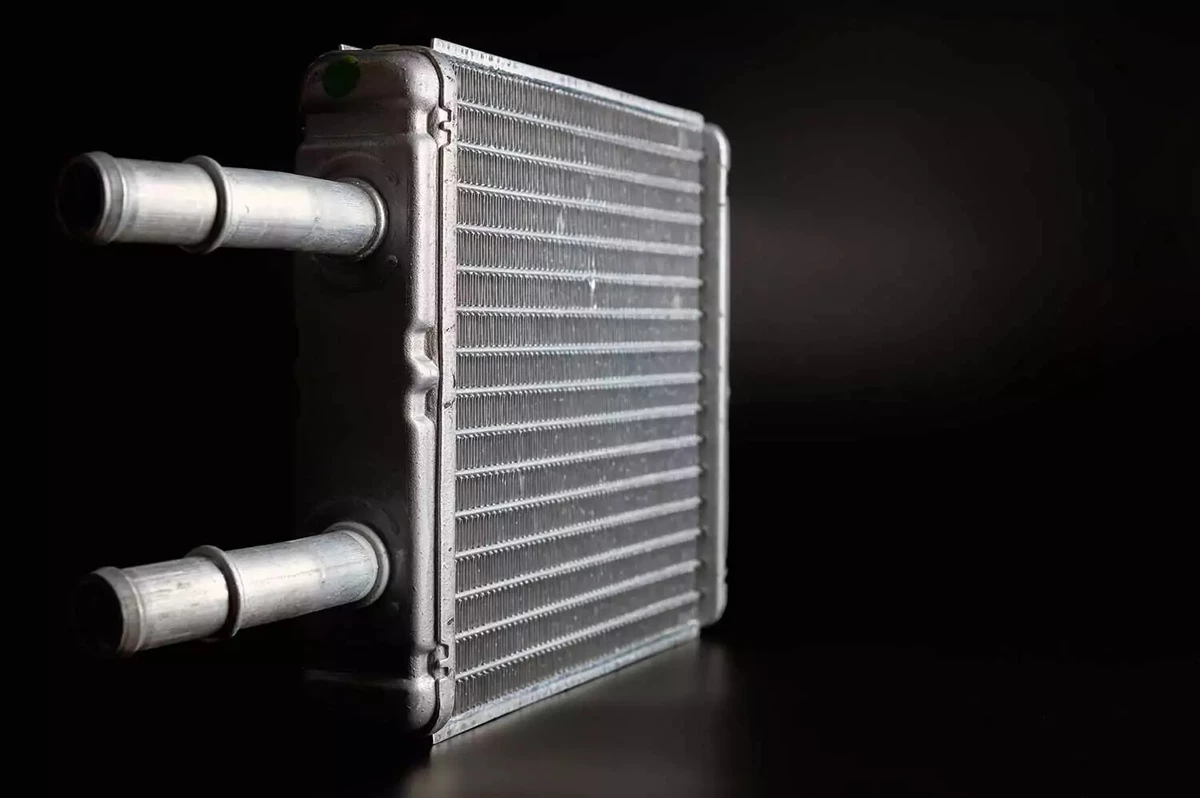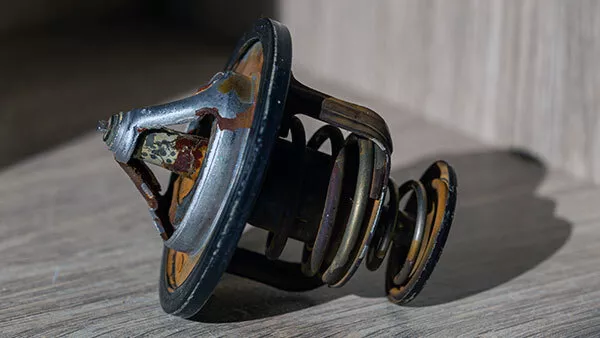If the air from the vents is cooler than it used to be, your heater core might be the problem. This can be a tricky repair, but there are ways to identify what is failing without taking your dashboard apart.
The heater core is a smaller version of the radiator. It has a center section of long tubes and cooling fins enclosed in metal or plastic tanks with hose fittings. The engine water pump and heater hoses circulate hot engine coolant through the heater core. A heater control valve on the inlet heater hose regulates coolant flow through the heater core.
The heater core sits in a housing or heater box behind the dash that may also contain the air conditioning condenser and ventilation blower fan. Doors, ducts, and tubes deliver hot air from the heater box to the defroster, dash, and floor vents.
Turning on the heat opens the heater control valve. Hot engine coolant flows through the heater core. The ventilation fan forces air through the heater core fins, and heat flows out of the vents.

A heater core should last the lifetime of the vehicle. But that doesn’t always happen.
How long does a heater core last?
The heater core should last the lifetime of the vehicle. But like your radiator, its long and faithful service depends on cooling system maintenance. Engine coolant deteriorates over time. It can become corrosive and damage the radiator, heater core, and hoses. Rust can clog the radiator and heater core. A coolant leak can result in engine overheating and cylinder head failure, unleashing ruinous hot exhaust gasses and motor oil into the cooling system.
Symptoms and Fixes for a Bad Heater Core

Take steps before replacing the heater core. Have you changed your cabin air filter?
If the air from the vents is cooler than it used to be, your heater core might be the problem. This can be a tricky repair, but there are ways to identify what is failing without taking your dashboard apart.
The heater core is a smaller version of the radiator. It has a center section of long tubes and cooling fins enclosed in metal or plastic tanks with hose fittings. The engine water pump and heater hoses circulate hot engine coolant through the heater core. A heater control valve on the inlet heater hose regulates coolant flow through the heater core.
The heater core sits in a housing or heater box behind the dash that may also contain the air conditioning condenser and ventilation blower fan. Doors, ducts, and tubes deliver hot air from the heater box to the defroster, dash, and floor vents.
Turning on the heat opens the heater control valve. Hot engine coolant flows through the heater core. The ventilation fan forces air through the heater core fins, and heat flows out of the vents.
Removing and Replacing a Heater Core

The heater core sits behind the dash.
Removing and replacing a heater core often requires partial or complete removal of the dashboard and everything connected to it. This herculean task may require special tools to remove the dash, wiring harness connectors, vacuum hoses, air conditioning lines, heater hoses and clamps, ductwork, and a universe of bolts, fasteners, and clips.
What does it cost to replace a heater core?
A new heater core is inexpensive compared to the multiple hours of labor required to remove and replace it. Expect to spend $50 to $150 for the heater core replacement part. You can save labor costs by doing the job at home. Otherwise, paying a shop for about eight to 16 hours of labor adds up to more than $1,000.
Installing a heater core yourself can save you a pile of money, but the job comes with risks and hidden costs from damaging wiring harnesses, sensors, clips, and fasteners on the way.
What maintenance can prevent heater core problems?
The heater core relies on your engine cooling system to pipe toasty air into the cabin at the touch of a button or screen. Keeping your engine's cooling system operating at peak efficiency is easy.
Learn how to maintain and fix your radiator - opens in new window or tab. and radiator hoses - opens in new window or tab.with our informative guides. See our step-by-step guides and videos about removing and replacing cooling system components from the water pump - opens in new window or tab. to the thermostat - opens in new window or tab..
Share your feedback
This article is meant to provide general guidance only. Automotive maintenance, repair, upgrade, and installation may depend on vehicle-specifics such as make and model. Always consult your owner's manual, repair guide for specific information for your particular vehicle and consider a licensed auto-care professional's help as well, particularly for advance repairs.

















